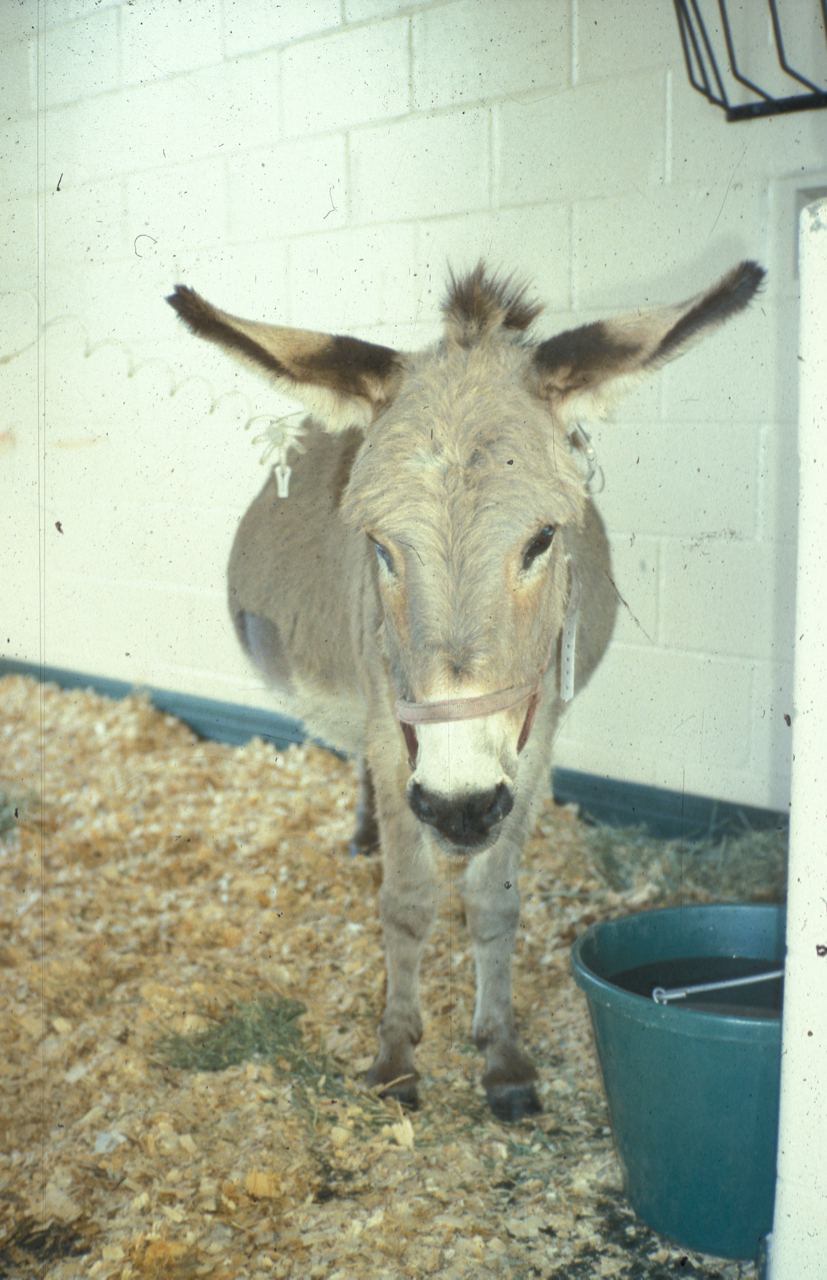Education
-
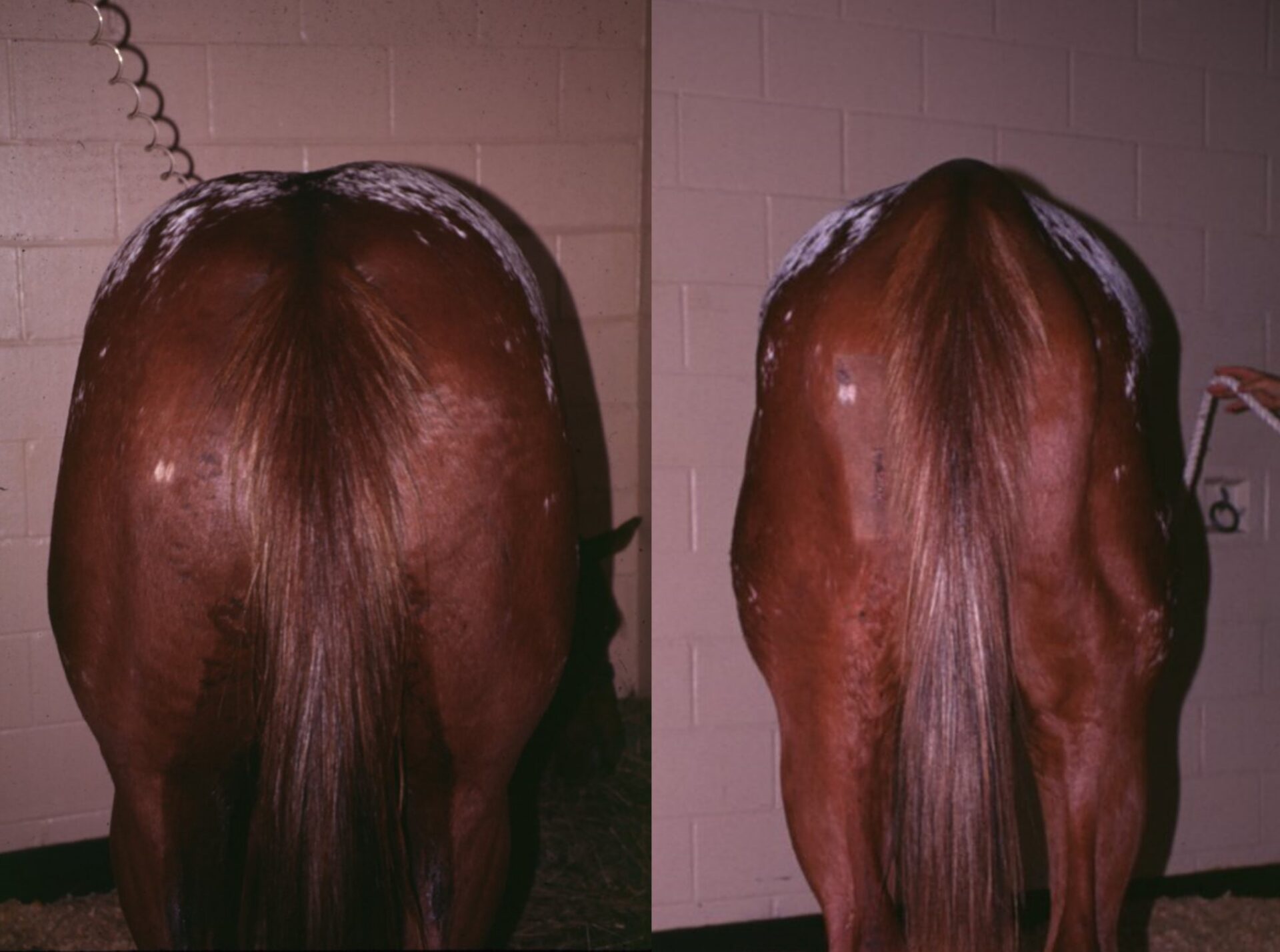
Polysaccharide Storage Myopathy (PSSM)
Polysaccharide storage myopathy (PSSM) is a genetic disease where both normal and abnormal glycogen are stored in muscle. The condition was originally described in Quarter Horses, but it is now recognized in a variety of different breeds. There are two subtypes of the disease, PSSM type 1 and PSSM type 2. PSSM type 1 is…
-

The use of SGLT2 inhibitors in the management of high levels of insulin and laminitis – a preliminary study
This important study looked at the effectiveness of ertugliflozin, an SGLT2 inhibitor in reducing the high levels of insulin and the severity of lameness in 51 horses and ponies with Equine Metabolic Syndrome (EMS). It was conducted in Western Australia, and the lead author was Dr Tania Sundra. Others have shown that high levels of…
-
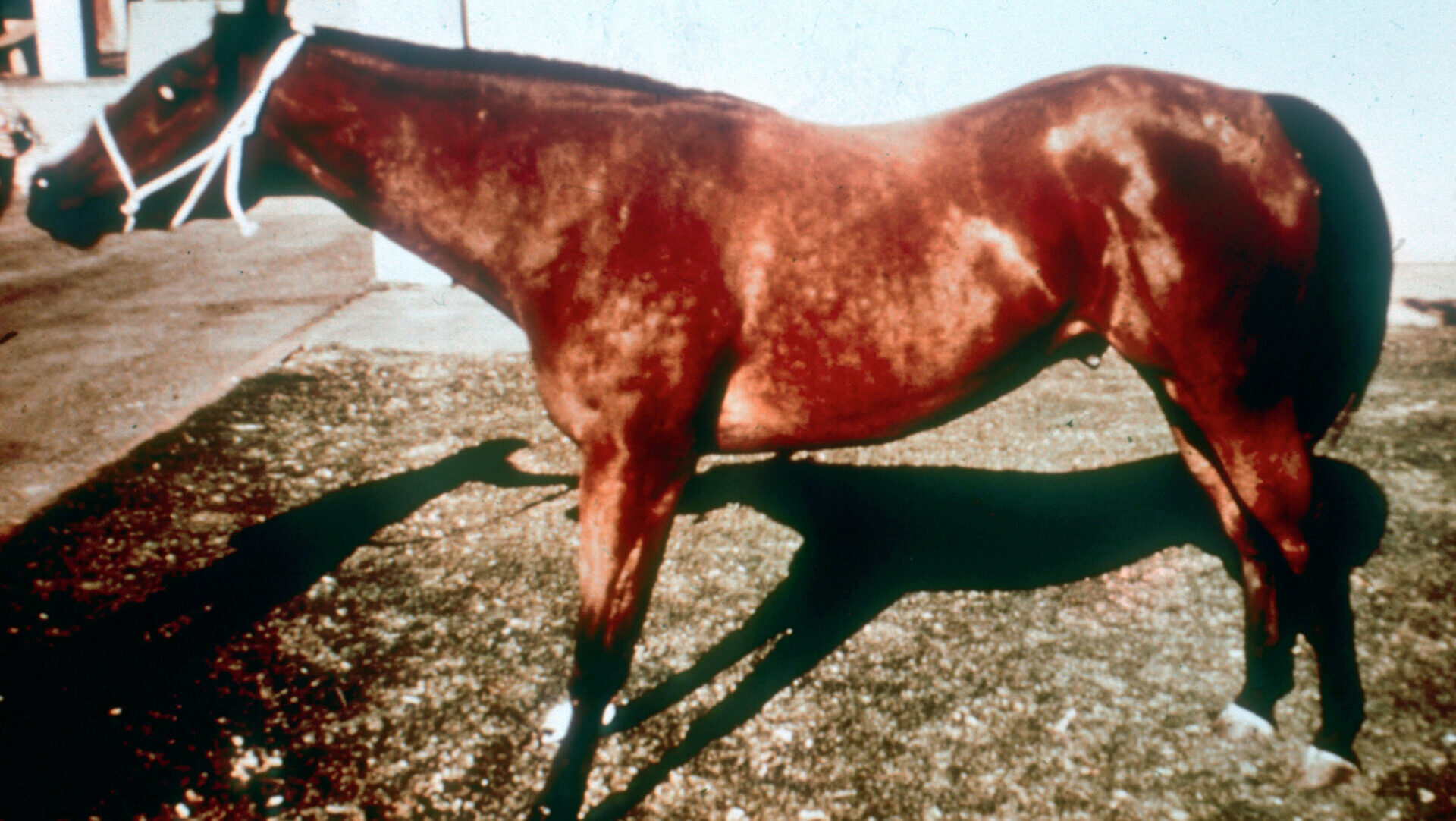
Tetanus
Tetanus is a serious infectious disease of horses that is highly preventable. Despite the availability of an affordable and highly effective vaccine (tetanus toxoid) the disease continues to cause sporadic infection and death in horses all over the world. In developed countries most cases occur because vaccination has been simply overlooked. Horses, along with sheep…
-
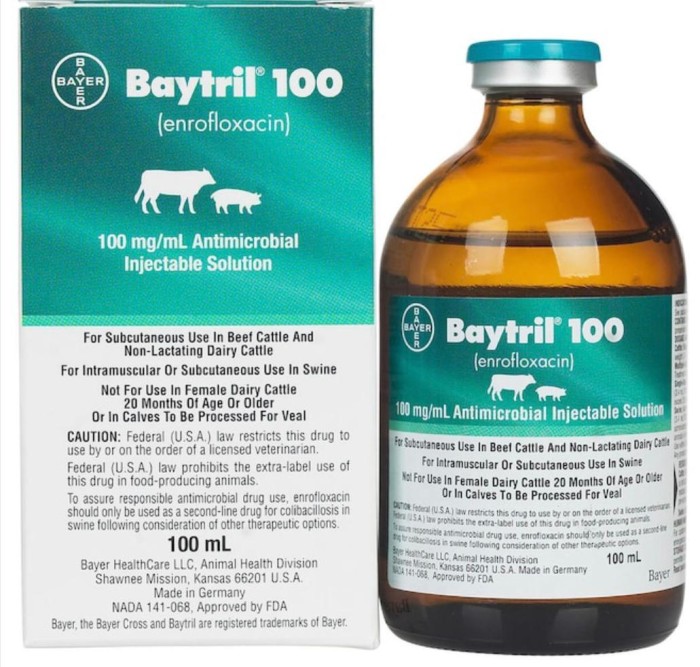
Fluoroquinolones
There are no registered fluoroquinolone antibiotics available for use in horses. Based on theoretical and observed orthopaedic problems in foals it seems unlikely that any products will be registered in the future. All use in horses is off-label. The two most commonly used drugs are enrofloxacin and ciprofloxacin. Ciprofloxacin is an active metabolite of enrofloxacin….
-

Hendra virus
Hendra virus is a significant pathogen in the context of both human and horse health. The condition is relatively uncommon, but the consequences of infection are severe. The Virus Hendra virus is a Henipavirus that belongs to family Paramyxoviridae. It is an enveloped, single-stranded, non-segmented RNA genome virus. Along with Hendra virus, Nipah virus, Moijang…
-

Autoimmune haemolytic anaemia (AIHA)
Autoimmune haemolytic anaemia (AIHA) results as a consequence to antibodies directed to the surface of red blood cells. Once the binding of antibody to the red blood cell occurs the erythrocyte is quickly removed from the circulation and destroyed (extravascular haemolysis). Alternatively, the red blood cells can be destroyed within the circulation by the activation…
-
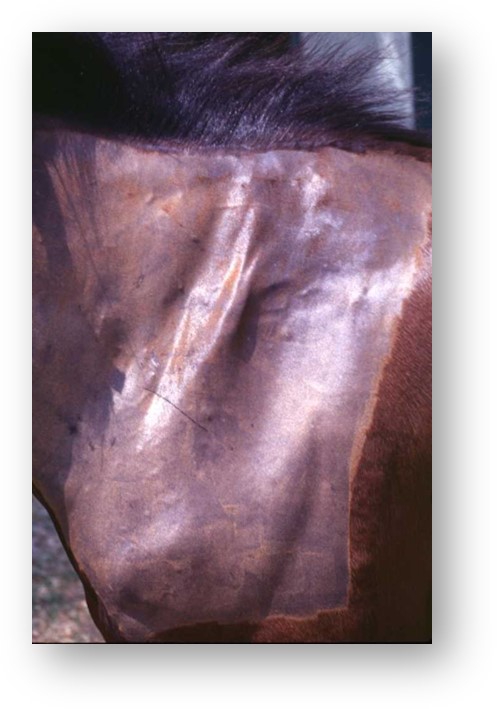
Sweeny (Suprascapular nerve)
The term ‘sweeny-syndrome‘ (also spelled ‘sweeney‘) was introduced more than a century ago to describe a syndrome of muscle atrophy over the shoulder caused by the harnesses used by horses to pull heavy objects. The harness would put pressure on the suprascapular nerve leading to atrophy of the muscles innervated by that nerve. The suprascular…
-
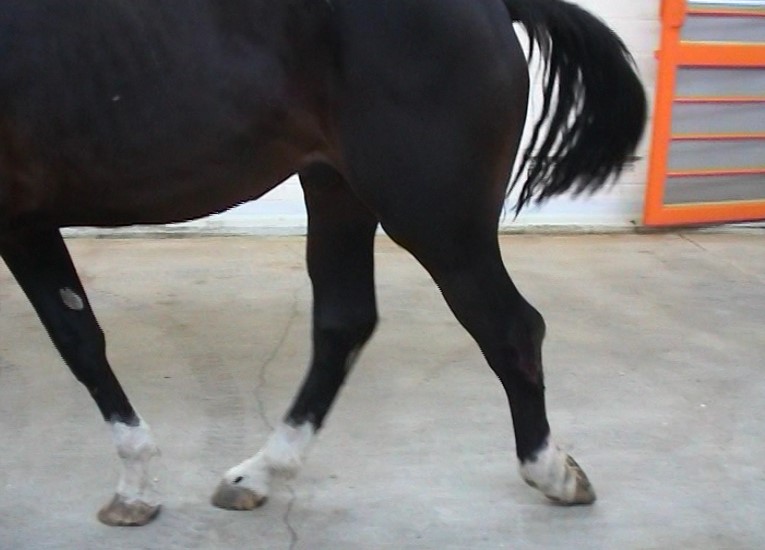
Stifle lock (Upward fixation of the patella)
This is a fairly common problem of ponies and young horses. Stifle lock is referred to upward or proximal patellar fixation. In a moderate to severe form the limb becomes ‘locked’ in extension causing the limb to drag behind in extension, hopping along on 3 legs until it is suddenly ‘released’ in a rapid, jerky…
-

Gastric Impactions
Gastric impactions are often diagnosed when horses are ‘gastroscoped’ as a check for ulcers. The reality is that nearly all of these are not true impactions, but rather unexpected retention of feed in stomach after fasting. The normal stomach will form firm, round boluses as the feed is moved into and out of the antrum….
-
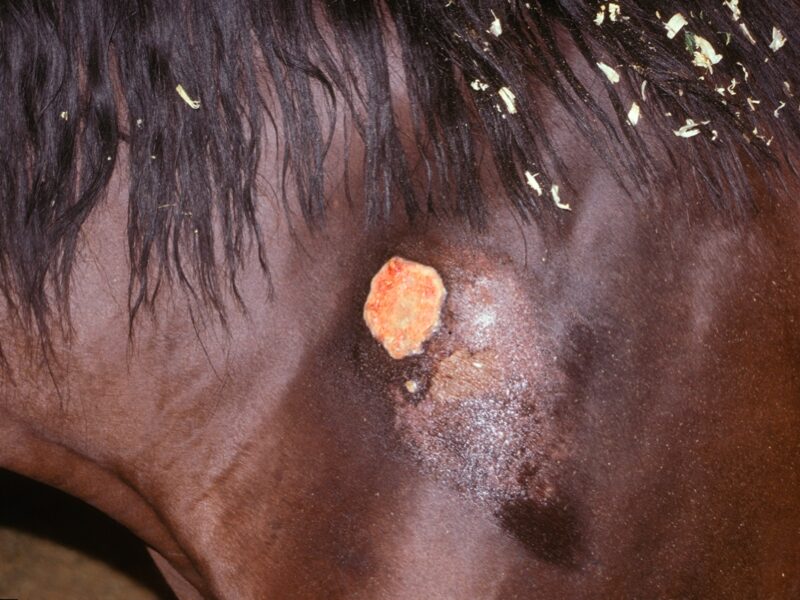
Cutaneous Habronemiasis (Summer sores)
Habronemiasis is also referred to as Habronematidosis in some articles and text books. Of the 12 species of Habronema known to infect mammals there are 3 species that infect horses, donkeys, mules and zebras: Habronema muscae Habronema microstoma (majus) Draschia (Habronema) megastoma The parasites are known for their ability to produce cutaneous nodules in adult…
-
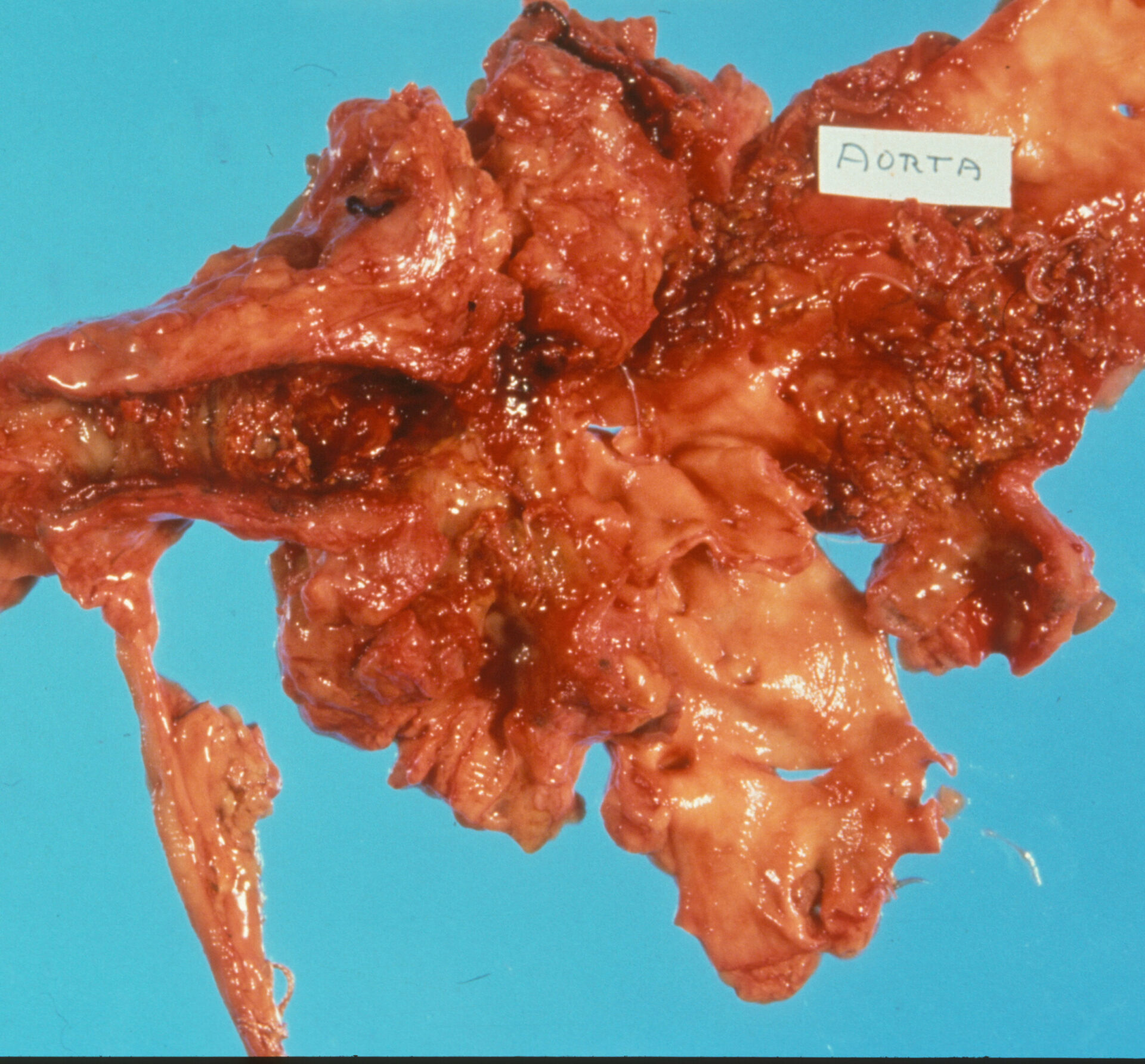
Large Strongyles
There are three Strongylus species that infect horses, Strongylus vulgaris, Strongylus edentatus and Strongylus equinus. Of these only S. vulgaris is considered to be of clinical importance. It is known as the equine ‘bloodworm’ and is one of the most pathogenic parasites in domestic animals. S. edentatus is also known as the ‘flank worm’. The…
-
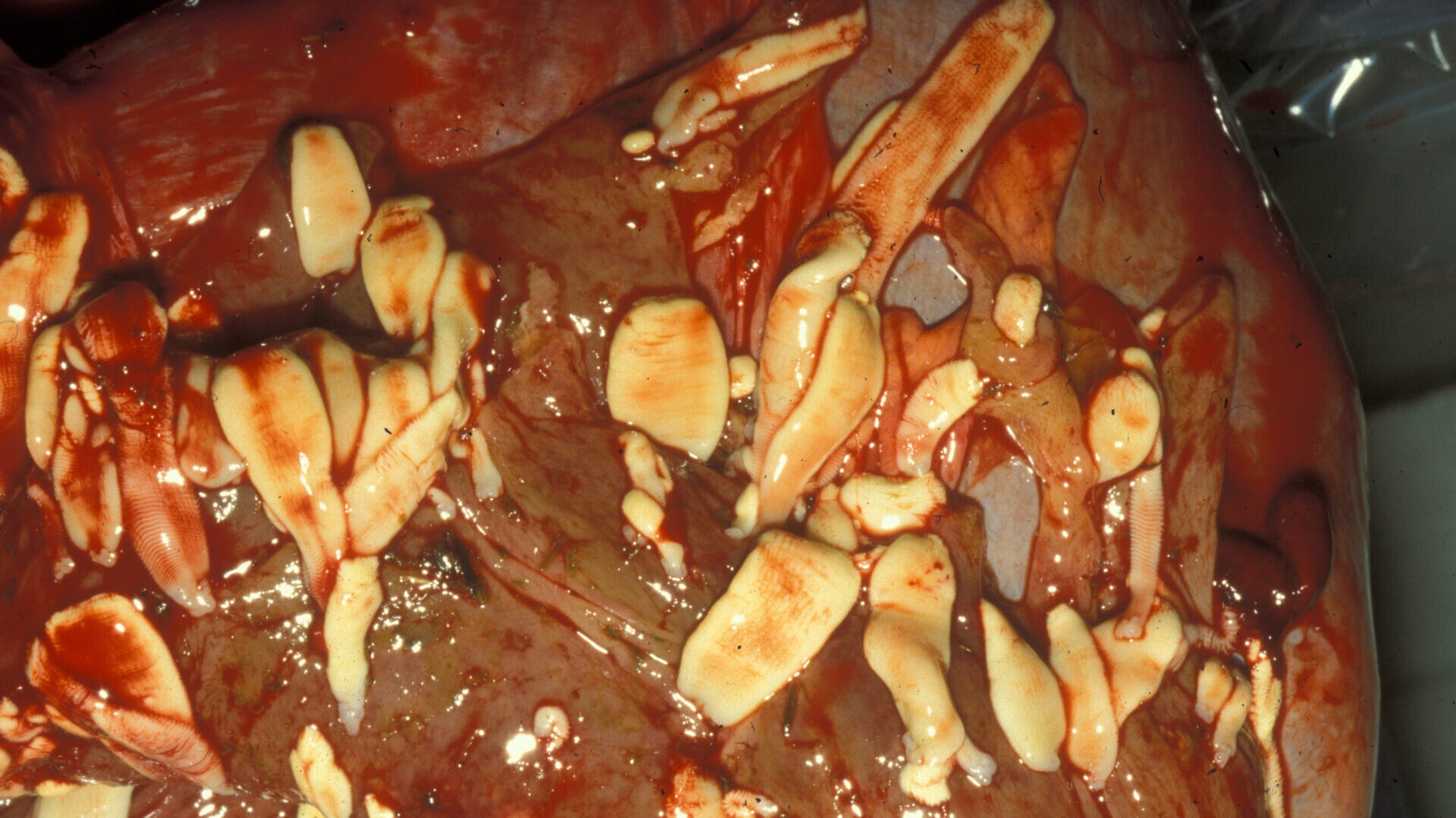
Tapeworms
The principal tapeworm (cestode) of the horse is Anoplocephala perfoliata. There are two other species of tapeworm that infect horses, Anoplocephala mamillana and Anoplocephala magna, although both are rare in domesticated animals. A. perfoliata is found in most areas of the planet where horses graze, but are uncommon or absent in horses living in dry,…
-
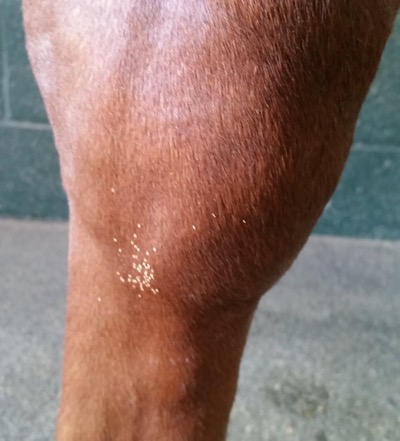
Stomach Bots (Gasterophilus species)
Many horse owners are horrified to see bot fly larvae in the stomach of their horses when checked for gastric disease. Although alarming to owners they have minimal to no impact on the health of the horse. There is also evidence that gastric bot fly larvae are becoming less prevalent in domestic horse populations, likely…
-

Ascarids (Parascaris species)
Ascarid (roundworm) infections are very common in foals. There are two ascarid species that are known to infect horses, Parascaris equorum and Parascaris univalens. Recent information indicates that of the two species, P univalens is the most common. Ascarid eggs can survive for years in the environment and remain infectious. The ideal temperature for egg…
-

Blood Loss Anaemia
Generally blood loss in all species is separated into 4 categories, based on if the blood loss is internal or external to the animal, and whether it is acute (sudden) or chronic. Acute external blood loss is likely the most common category, and occurs as a consequence to accidental trauma (eg., wire cuts), surgical trauma…
-

Mitral valve regurgitation
Leakage of blood across the mitral valve occurs relatively commonly, and when moderate can contribute to poor athletic performance, congestive heart failure or sudden cardiac death. The mitral valve separates the left atrium from the left ventricle. When the heart is resting (diastole) the valve is open allowing freshly oxygenated blood from the lungs to…
-

Exercise-induced pulmonary haemorrhage (EIPH)
Significant contribution by Dr Ellie Crispe of Simon Miller Racing. High intensity exercise is associated with lung haemorrhage (bleeding) in several species and man. The condition has been recognized in horses for more than three centuries. Horses with exercise-induced pulmonary haemorrhage (EIPH) are commonly referred to as ‘bleeders‘. EIPH is a highly prevalent disease of…
-

Pastern Dermatitis
Equine pastern dermatitis (EPD) is a cutaneous reaction that better fits a syndrome, rather than a specific disease entity. From a confusing point of view there are numerous lay terms to describe pastern dermatitis, typically based on severity and chronicity. These include terms such as ‘scratches‘, ‘mud fever‘, ‘mud rash‘, ‘greasy heel‘, and ‘dew poisoning‘….
-

Culicoides Hypersensitivity (Queensland itch)
Culicoides hypersensitivity is described by numerous terms including Queensland itch, summer itch, summer eczema, or sweet itch (in the UK). There are many Culicoides species and they are best known as biting midges. They have piercing and sucking mouthparts. Their preferred time of feeding is at dawn and dusk and they are considered to be…
-
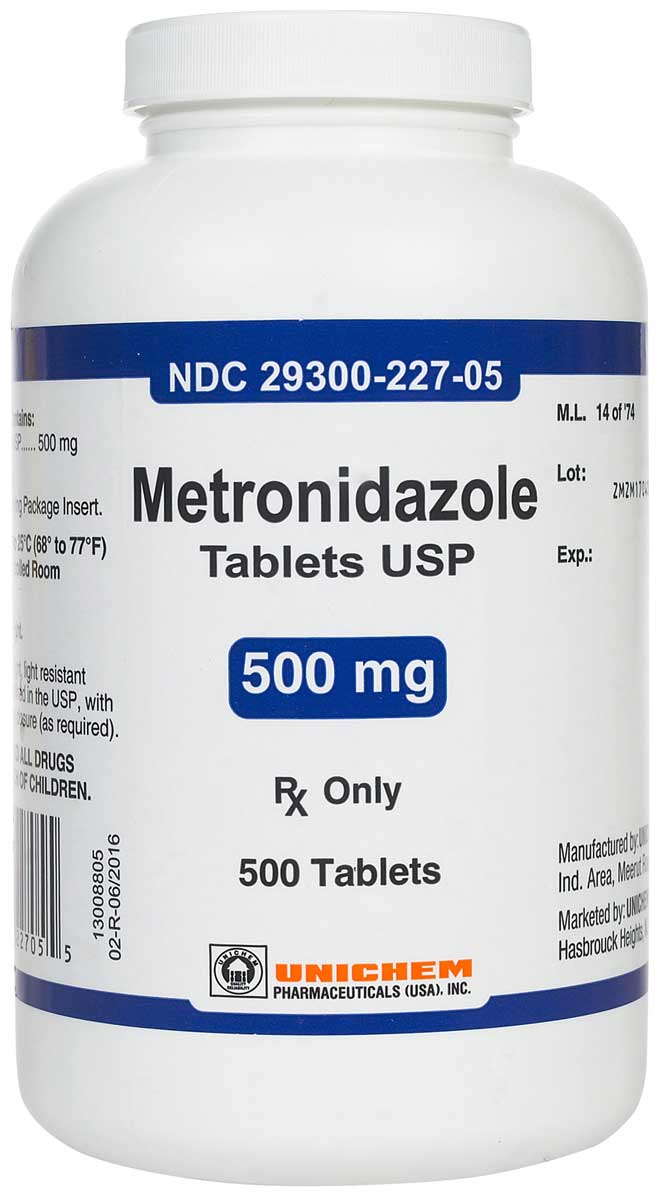
Metronidazole
Metronidazole has an important role in equine health, but many questions remain as to dosing, side-effects, and efficacy. It has a primary role in treating anaerobic and protozoal infections. It also has activity against microaerophilic bacteria, which are bacteria that prefer an anaerobic environment but can tolerate a small amount of oxygen in their environment…
-
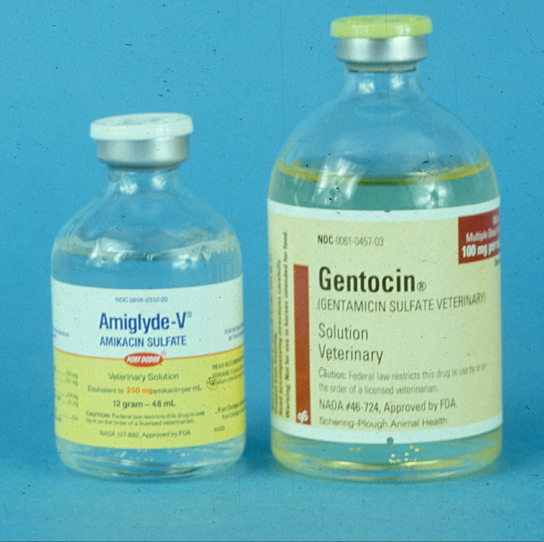
Aminoglycoside antibiotics
Drugs Gentamicin; Amikacin; Framycetin (aka Neomycin, Soframycin); Tobramycin; Streptomycin; Paromomycin; Kanamycin; Sisomicin; Netilmicin. Of these only gentamicin is relevant for systemic therapy in adult horses. Amikacin is very expensive, and tends only to be used systemically in newborn foals. Amikacin is a popular medication for intra-articular use, either as a treatment of synovial sepsis or…
-
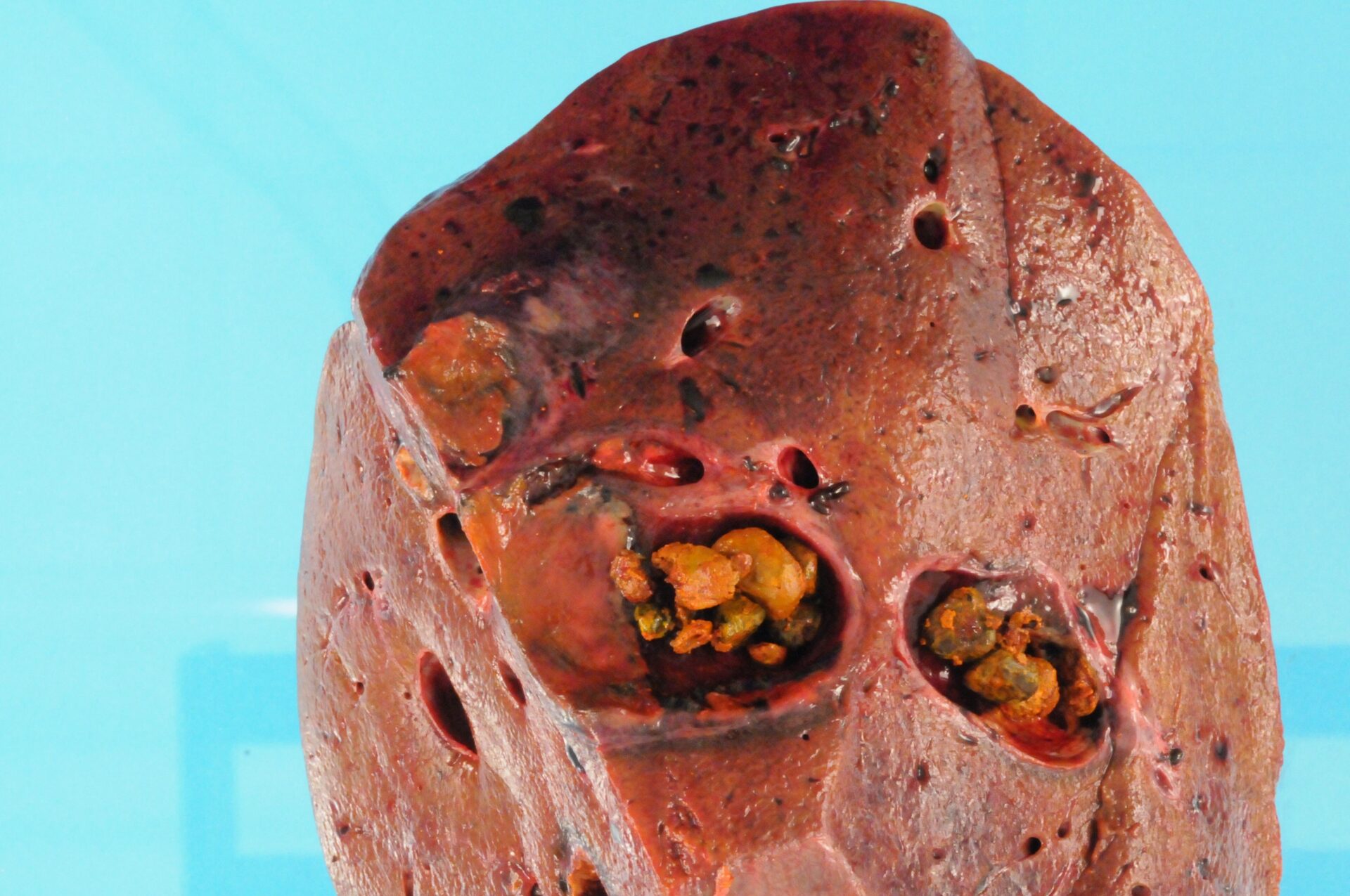
Cholelithiasis (Biliary calculi/stones)
Choleliths are calculi that develop within the biliary tree. Their formation can be associated with signs of liver disease, and if they are large enough to obstruct the common bile duct then liver failure can occur. Biliary calculi formation commonly occur as a consequence to other hepatobiliary diseases, such as ascending bacterial cholangiohepatitis. Bilirubin is…
-

Glycogen Branching Enzyme Deficiency (GBED)
Glycogen branching enzyme deficiency (GBED) is a fatal disease of newborn Quarter Horse and Paint foals. GBED is an inherited disease with autosomal recessive pattern of inheritance. It has been estimated that 8.3% of Quarter Horses and 7.1% of Paints are carriers of the gene for GBED. The enzyme deficiency will often result in abortions,…
-
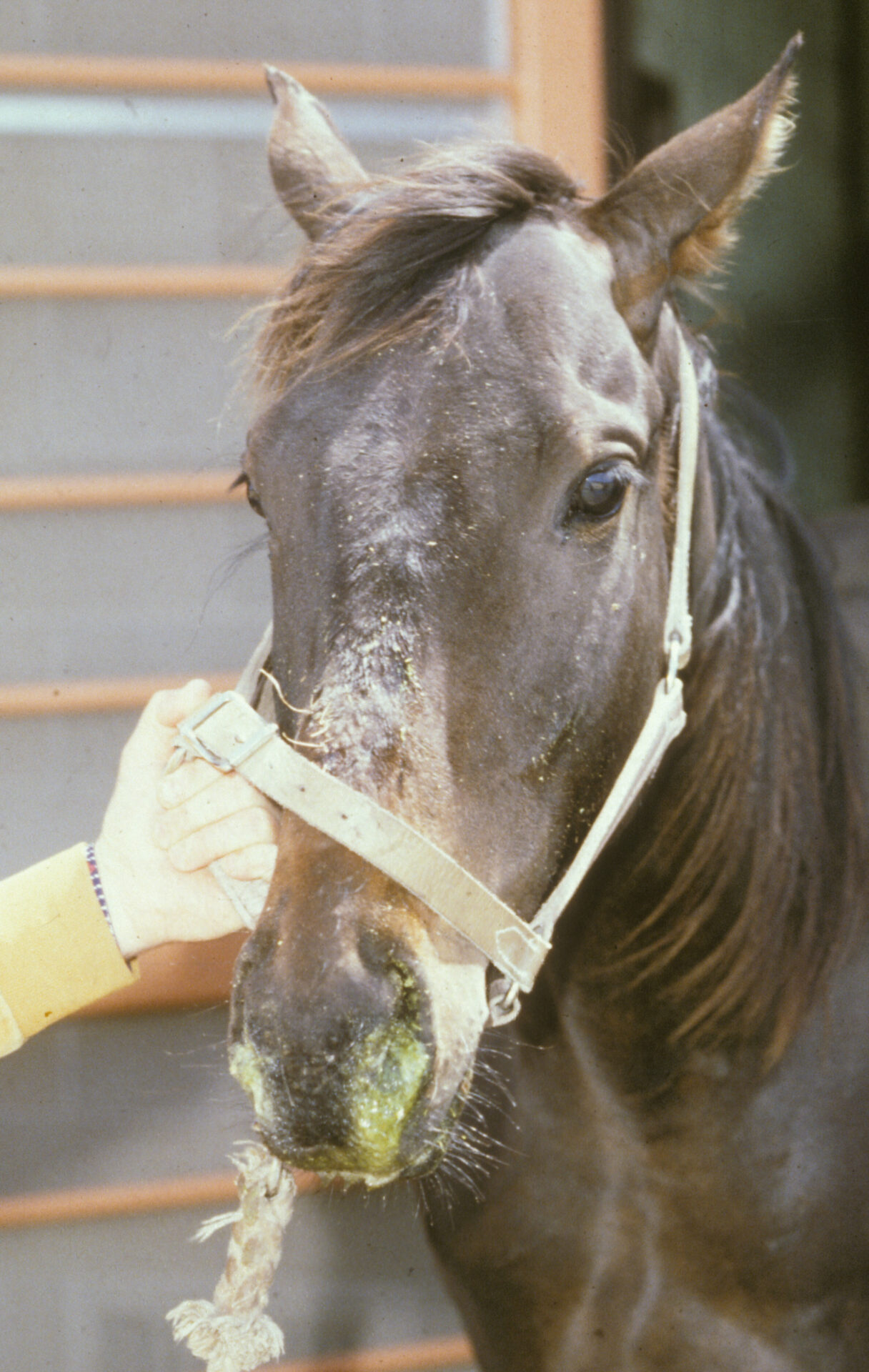
Choke (Oesphageal obstruction)
The term ‘choke‘ is used to describe horses that have an obstruction of their oesophagus, the section of the digestive tract that connects the mouth and the stomach. There are several substances that are commonly associated with obstruction of the oesophagus in horses. These include hay, pellets or cubes, foreign bodies (e.g., apples, potatoes), bedding…
-
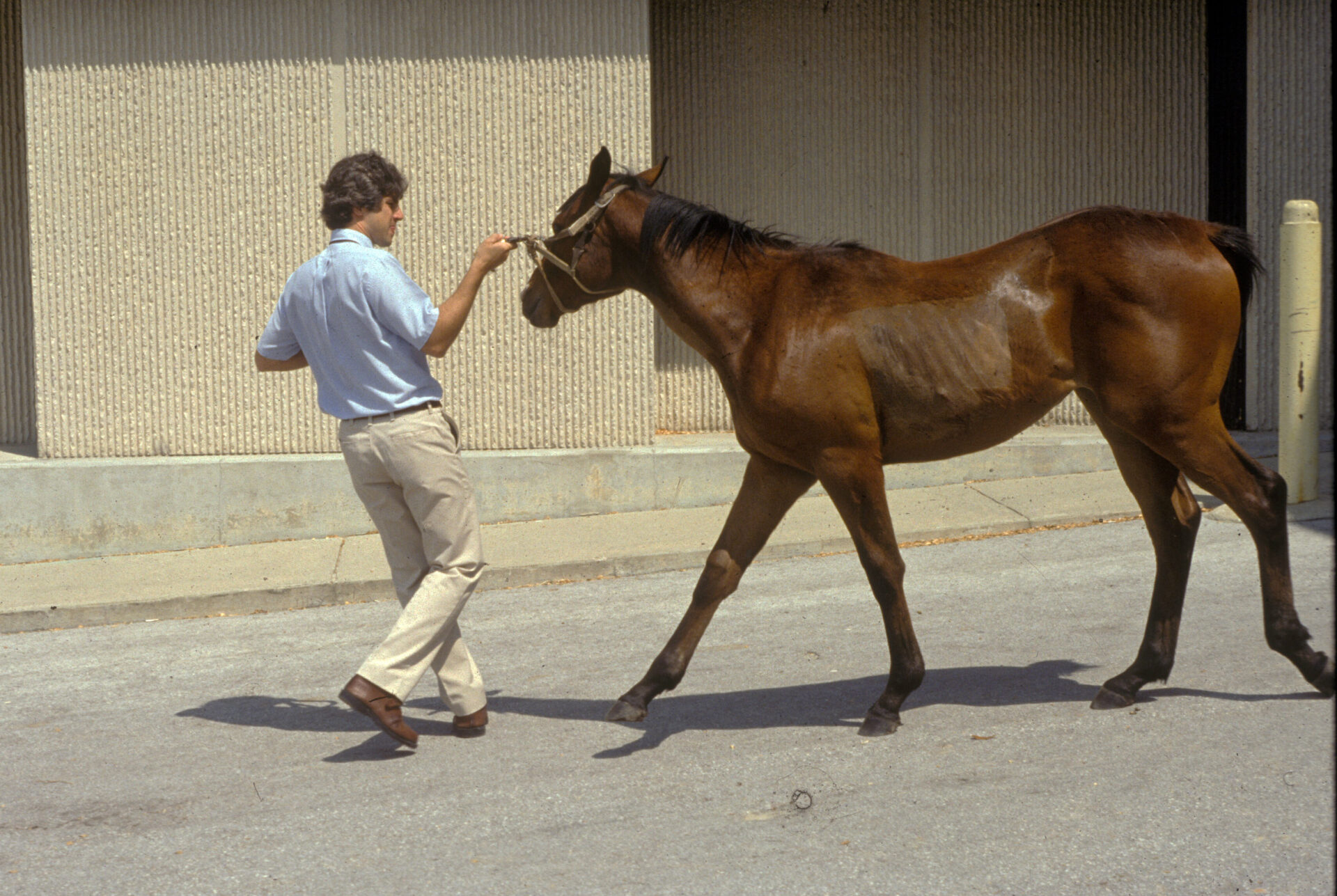
Cervical Stenotic Myelopathy (CSM) – Wobbler Syndrome
This syndrome is defined by limb ataxia and weakness caused by developmental anomalies or degenerative conditions of the cervical vertebrae. Cervical Stenotic Myelopathy (CSM) is an important condition of several breeds, including Thoroughbreds, Warmbloods and Tennessee Walking Horses. It is less commonly seen in Quarter Horses and Quarter Horse-based breeds. Standardbreds and Arabians are rarely…
-

Sporotrichosis
Sporotrichosis is caused by the fungal agent, Sporotrichium (Sporothrix) schenckii. The disease in horses is initiated through contamination of a skin wound. The fungus is a soil saprophyte. Nodules will develop at the site of entry and then the fungus spreads through lymphatics. This causes thickening or cording of the lymphatics with nodules appearing along…
-

Cervical Radiculopathy/Nerve Root Signature (Root sign)
The condition of nerve root signature or nerve root sign is poorly described in the horse literature. However there is a growing awareness of a syndrome affecting the forelimbs caused by compression of the nerve roots as they exit the spinal in the cervical vertebrae. The condition is very well described in humans and is…
-
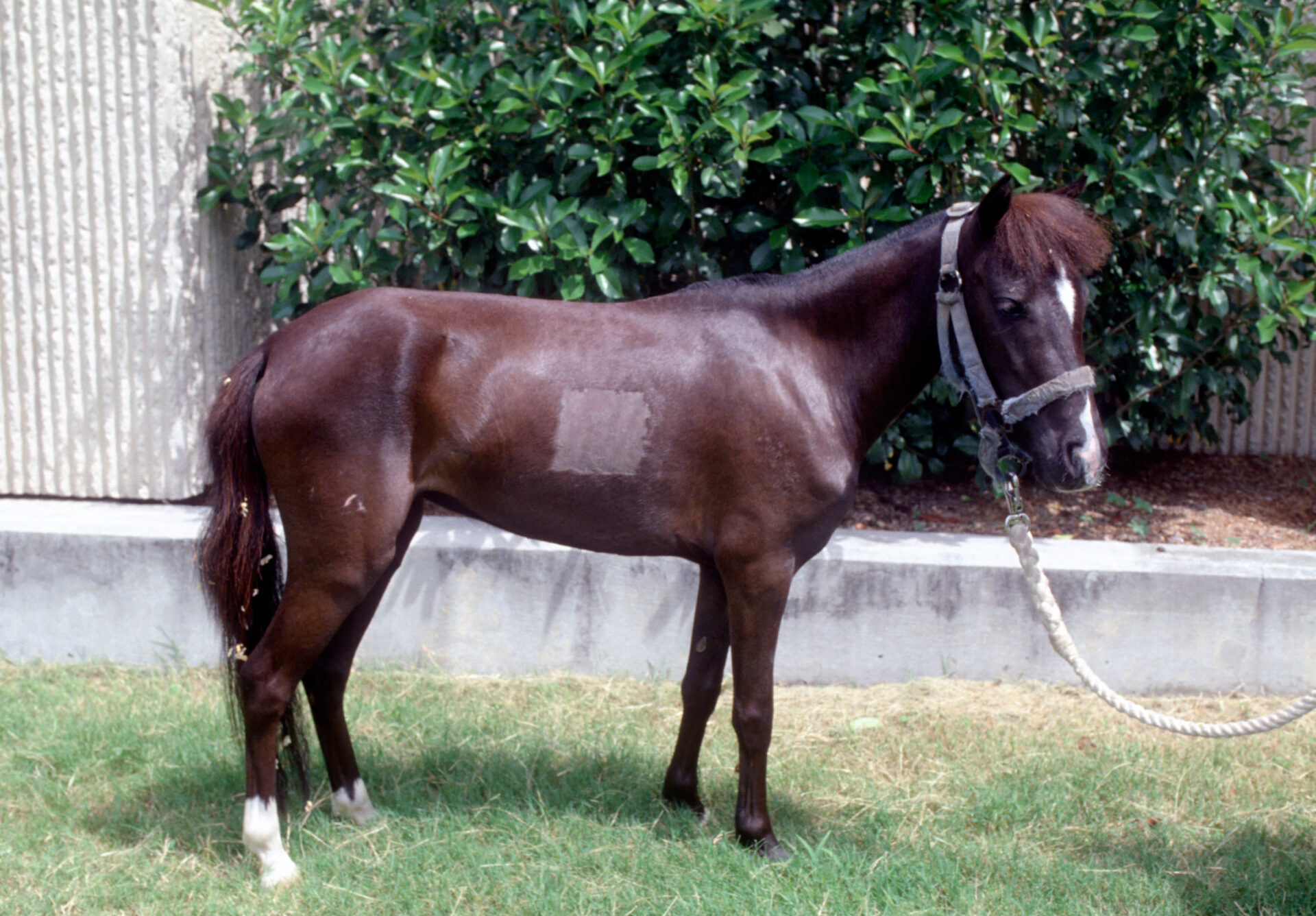
Phenylbutazone toxicity
Over-dosage of phenylbutazone can lead to a variety of problems including gastrointestinal tract ulceration including oral ulceration, renal medullary crest necrosis, and the syndrome of right dorsal colitis. The maximum recommended dose of phenylbutazone is 8.8 mg/kg bodyweight, divided twice daily (ie., 4.4 mg/kg bid) for 3 days. Most cases are reported in ponies and…
-
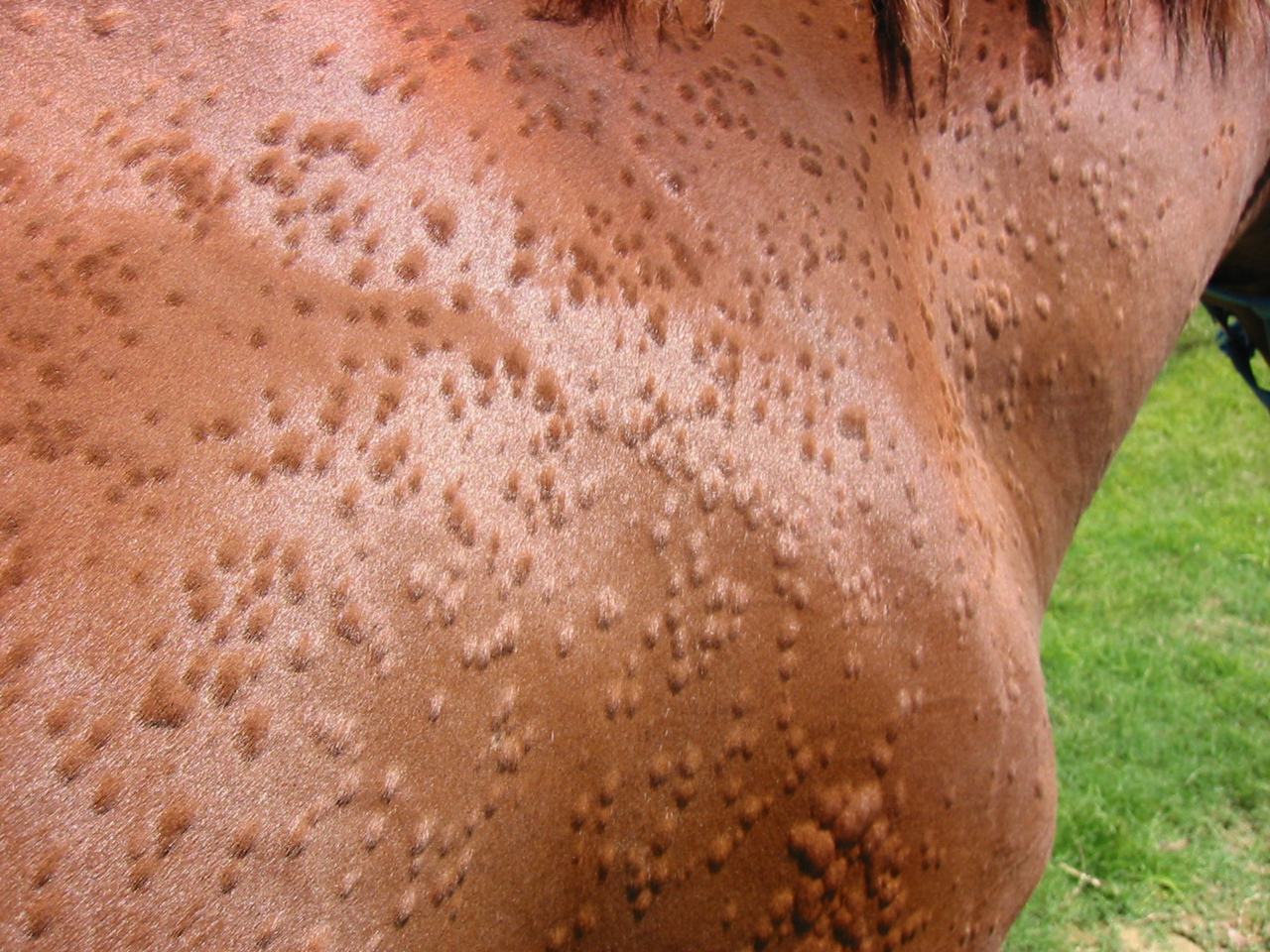
Hives (urticaria)
Hives is a symptom rather than a specific disease. Of all the domestic species horses are the most likely to develop hives. Although there is no sex predilection the average age of onset is 1-10 years and the Arabian and Thoroughbred breeds are predisposed. Hives is a consequence to mast cell, and less commonly, basophil…
-
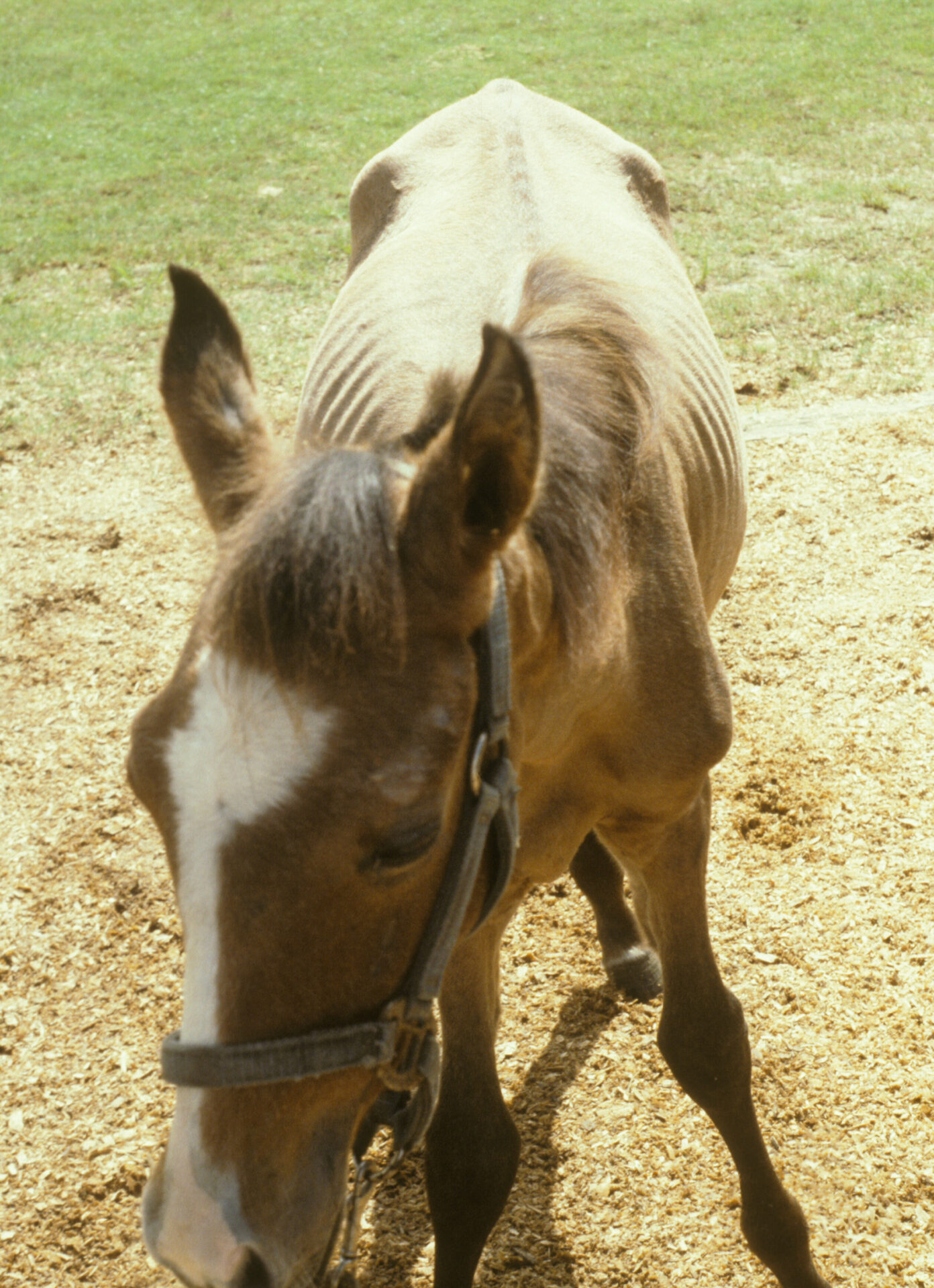
Equine Proliferative Enteropathy (EPE)
Equine Proliferative Enteropathy (EPE) is a disease predominately of weanling foals in the 3-8 month age group. Although less common, it can also be seen in yearlings and adult horses. It can affect individual animals or can be associated with outbreaks. In some regions the disease can affect up to 10-15% of a foal crop,…
-
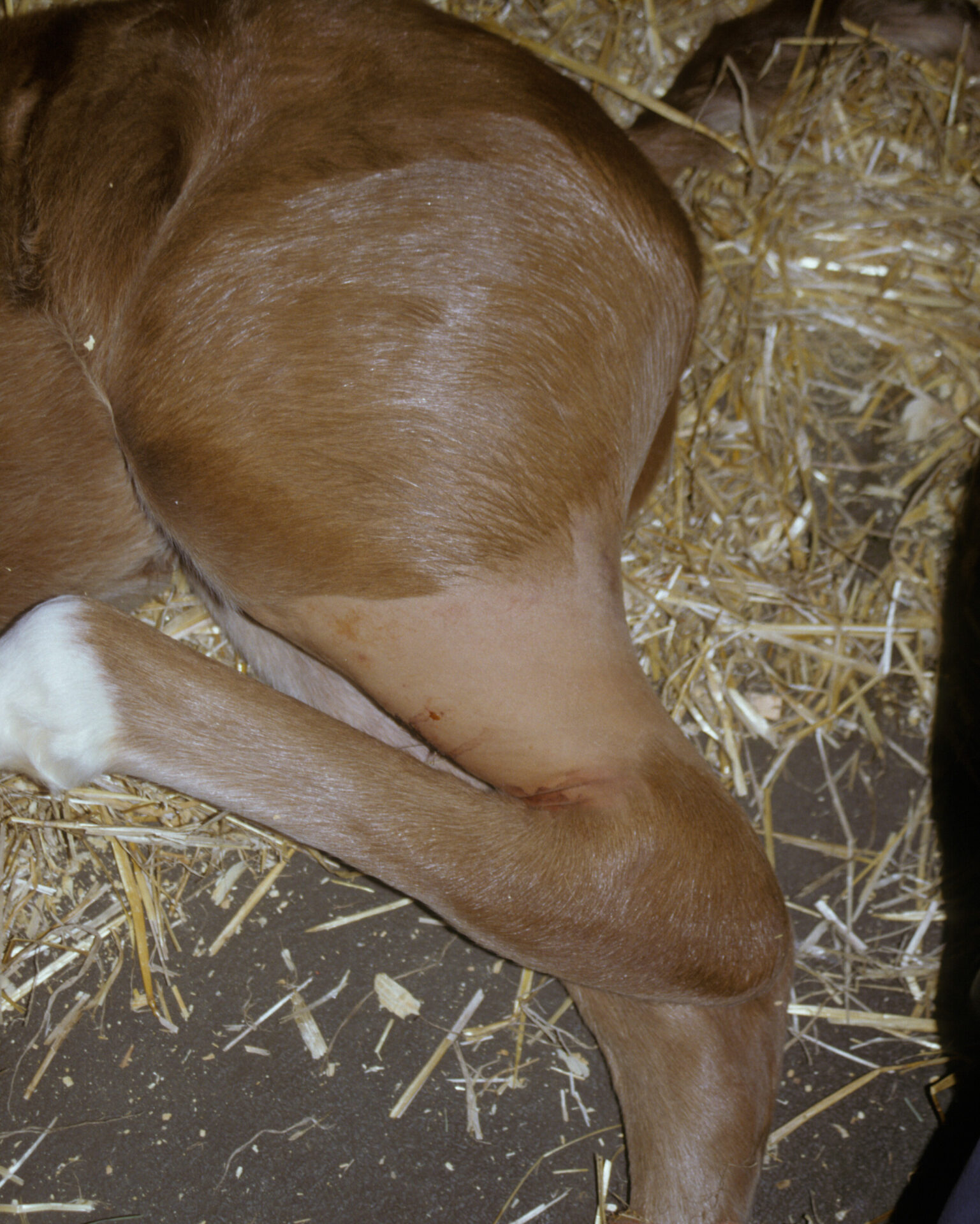
Gastrocnemius rupture
The gastrocnemius muscle and associated tendon are critical for rising and weight bearing. The function of the gastrocnemius muscle is to extend the hock and flex the stifle. It is part of the caudal muscles of the crus. It is innervated by the Tibial nerve and inserts proximally on supracondylar tuberosities (medial and lateral) of…
-
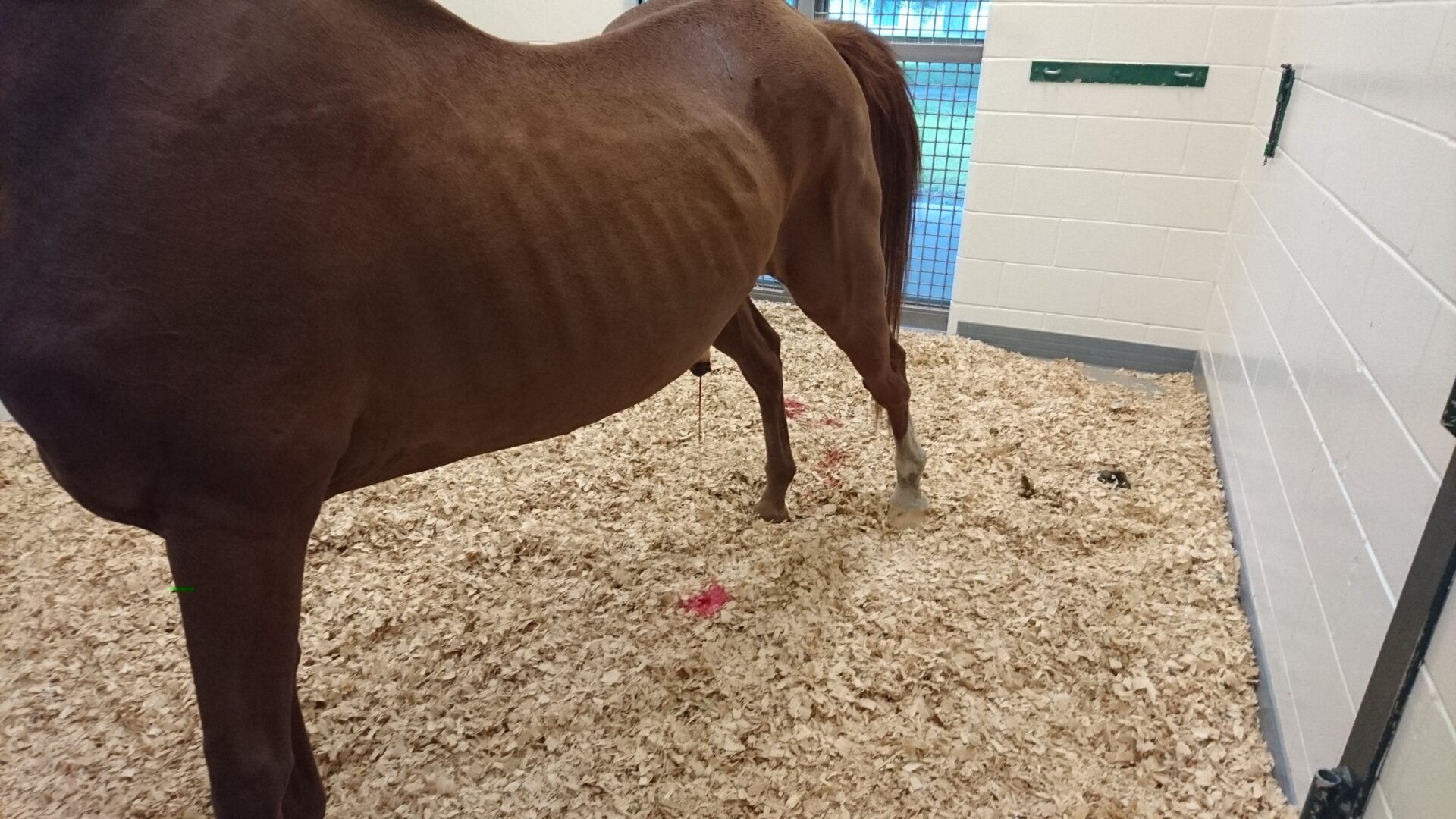
Haematuria (Blood in urine)
Haematuria is a relative common problem of adult horses. There are a number of potential causes (see below). Investigation should include collection of a urine sample for cytology and potentially culture. Ideally the sample is collected sterilely using a catheter, but if this is not available then a mid-stream free catch should be done. Ultrasound…
-

Sudden cardiac death in racehorses
Sudden cardiac death has been reported as a cause of fatality in up to 25% of unexpected racehorse deaths in flat racing. In a study published last month in the journal Animals Laura Nath and colleagues published a retrospective case-control study of all Thoroughbred fatalities at racetracks or training facilities in Melbourne, Victoria. The study…
-
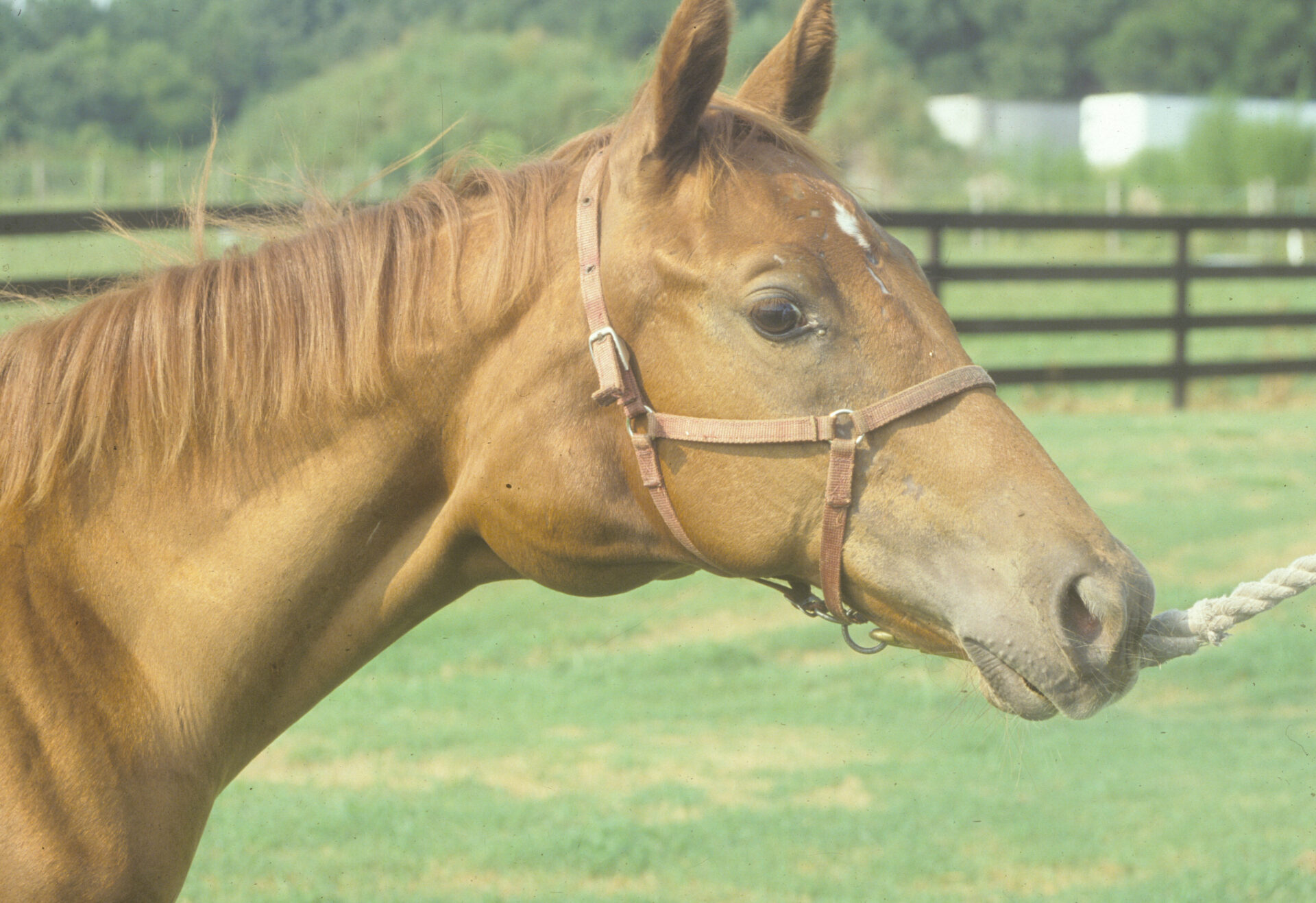
Guttural Pouch Tympany
Guttural pouch tympany is a rare condition, but occurs more common in filly foals. The condition is usually apparent soon after birth, but in some horses the signs may not be evident for up to 1 year of age. Most affected foals have a single pouch affected. The cause of guttural pouch tympany is not…
-
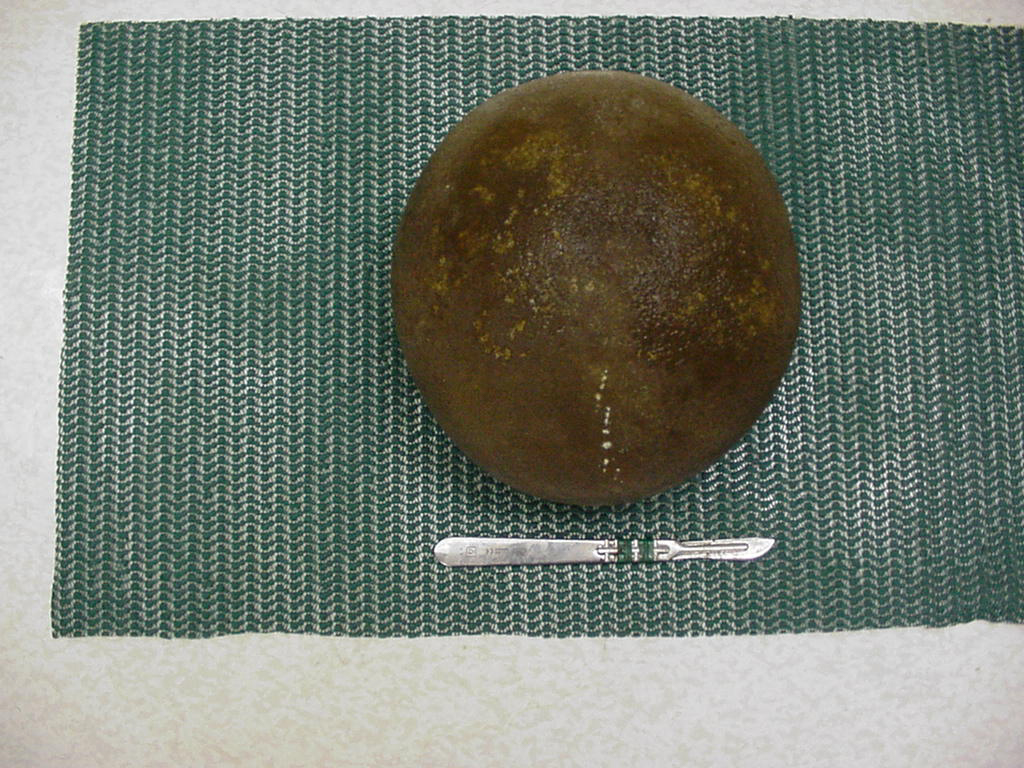
Enterolithiasis
Intestinal calculi that form in the large intestine are termed enteroliths. Although all breeds are affected, Arabians are over-represented. The vast majority of animals with enteroliths are older than 5 years of age. Enteroliths occur rarely in Western Australia. The calculi form by depositing layers of magnesium ammonium phosphate (struvite) around a dense nidus, such…
-

Subsolar (Foot) abscess
A subsolar abscess occurs after a penetrating injury to the sole. It is the most common cause of a sudden (acute) lameness and can occur within 12 hours of the injury. Affected horses are often found unable to bear weight on the affected limb with pointing of the toe (grade 5/5). Some are less severely…
-

Fibrotic myopathy
Fibrotic myopathy is a condition that is most commonly associated with sliding stops (see video below) by reining Quarter Horses and Polo horses. It is typically due to repeated tearing and stretching of muscle fibres of the semitendinosus muscles, and less commonly the semimembranosus and biceps femoris muscles. These represent the muscles of the hamstring…
-
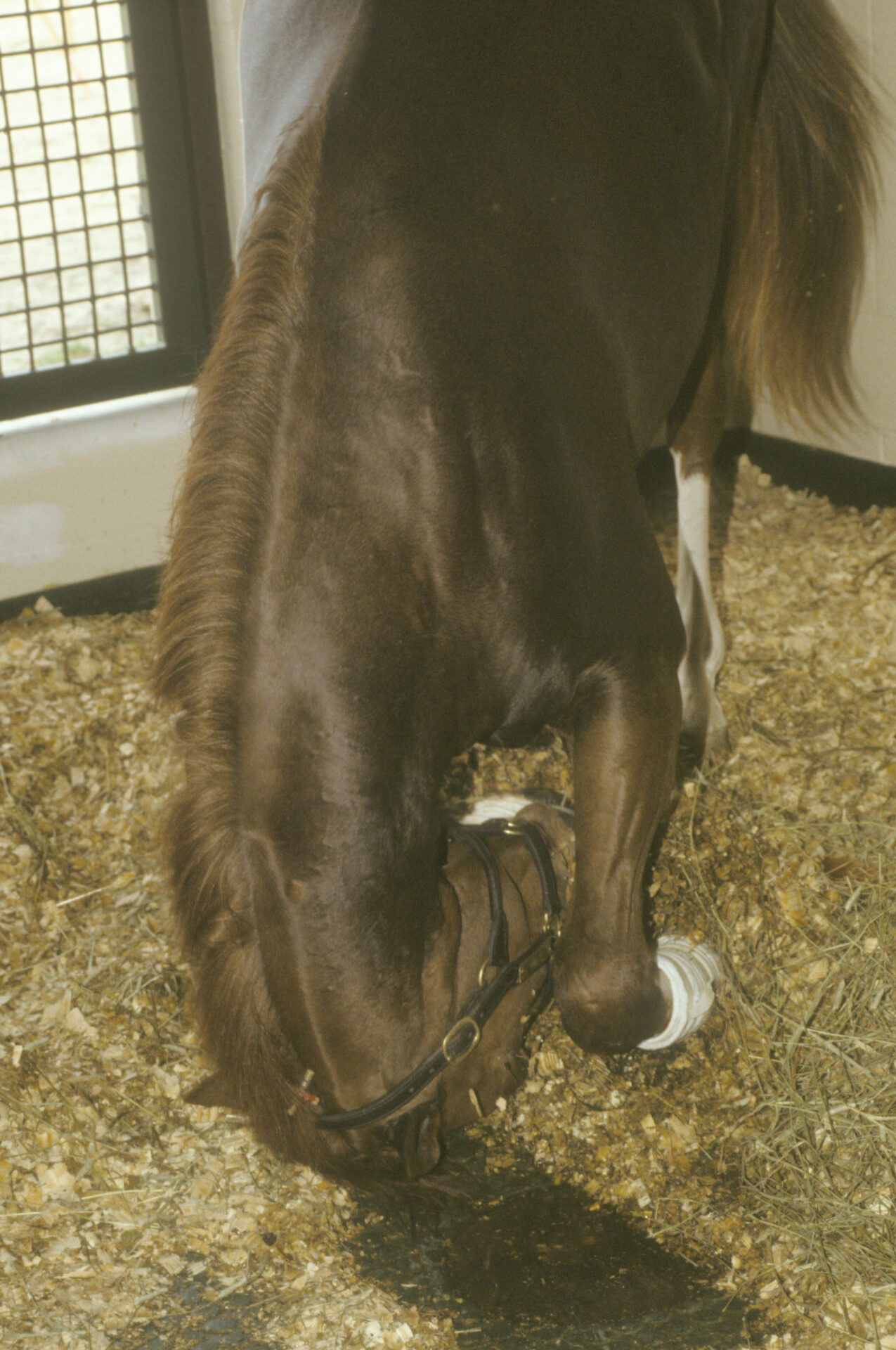
Fluphenazine reactions
Fluphenazine decanoate (Modecate, Prolixin) is potent long-acting sedative that is used in horses to facilitate handling and early training in difficult and dangerous animals, and is also used to treat some vices, such as self-mutilation syndrome. It is in the phenothiazine group of medications. In people it is used to treat a number of psychoses,…
-

Birdsville Indigo and Creeping Indigo poisoning
There is well defined syndrome associated with the ingestion of Birdsville Indigo (Indigofera linnaei) or Creeping Indigo (Indigofera spicata). Birdsville Indigo occurs across a large part of central and northern Australia. It also occurs throughout southeast Asia. Creeping Indigo is found in the south eastern USA, particularly in Florida. Creeping indigo toxicity was recently reported…
-
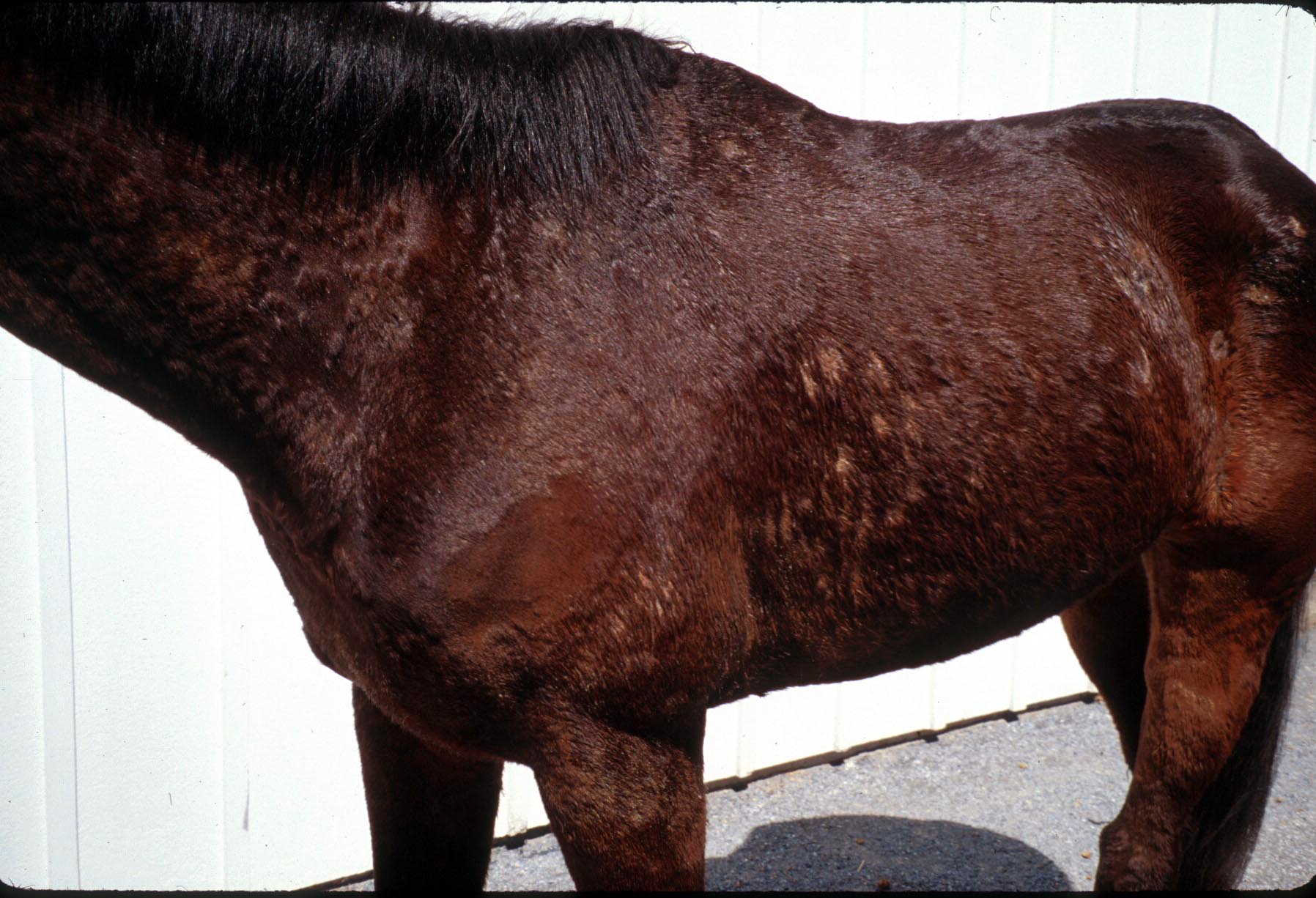
Pemphigus foliaceus
Pemphigus foliaceus is an auto-immune disease which results from autoantibodies forming against the proteins responsible for holding the keratinocytes together in the epidermis. The result is a loss of cohesion and the formation of pustules just below the stratum corneum. P. foliaceus is part of the pemphigus complex. Sixty percent of the cases have been…
-

Ringworm (Dermatophytosis)
A common condition of horses, especially younger animals. Older horses can be re-infected, but the signs are usually milder. Transmission can be facilitated by overcrowding, sub-optimal nutrition, or general poor sanitation. It can occur in places on the horse that are susceptible to microtrauma and exposure to tack, such as the saddle, girth, halter, bridle…
-
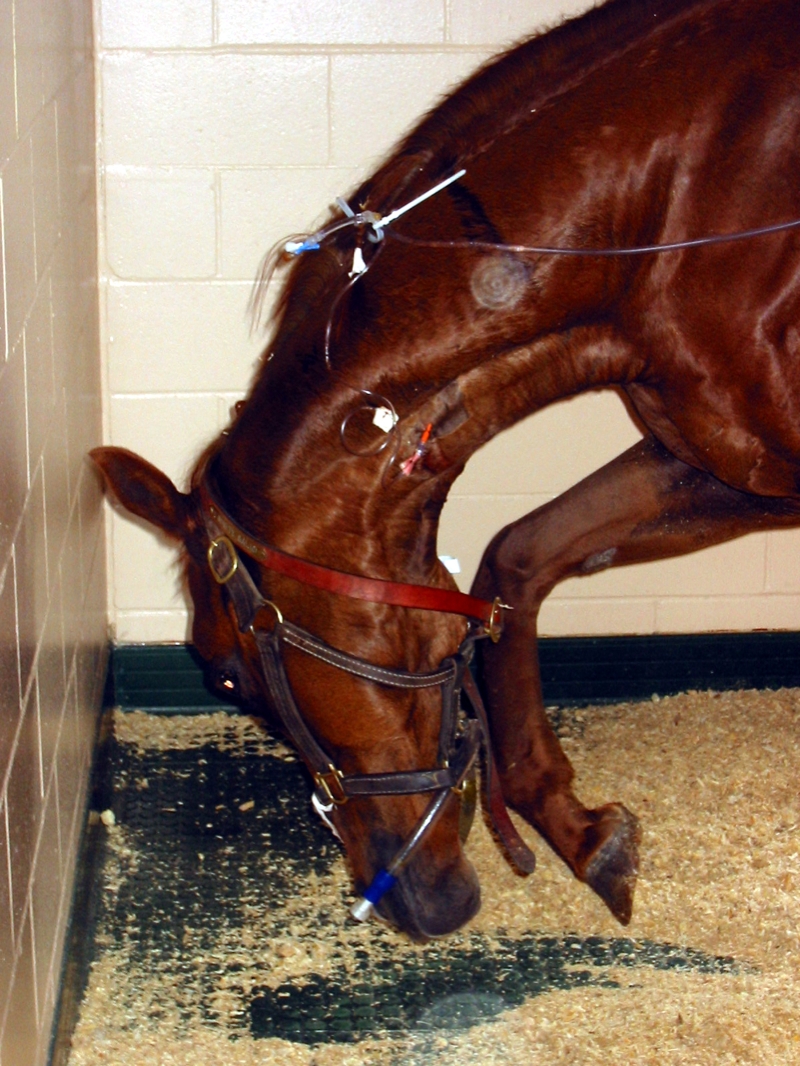
Colic in Adult Horses
Colic is not a specific disease, rather a clinical sign. Colic simply describes abdominal pain and it could originate from a wide variety of sources. Most of the time it originates in the stomach or intestinal tract, but the pain could also arise from other regions, including the kidneys, genital tract, liver, pancreas, or the…
-
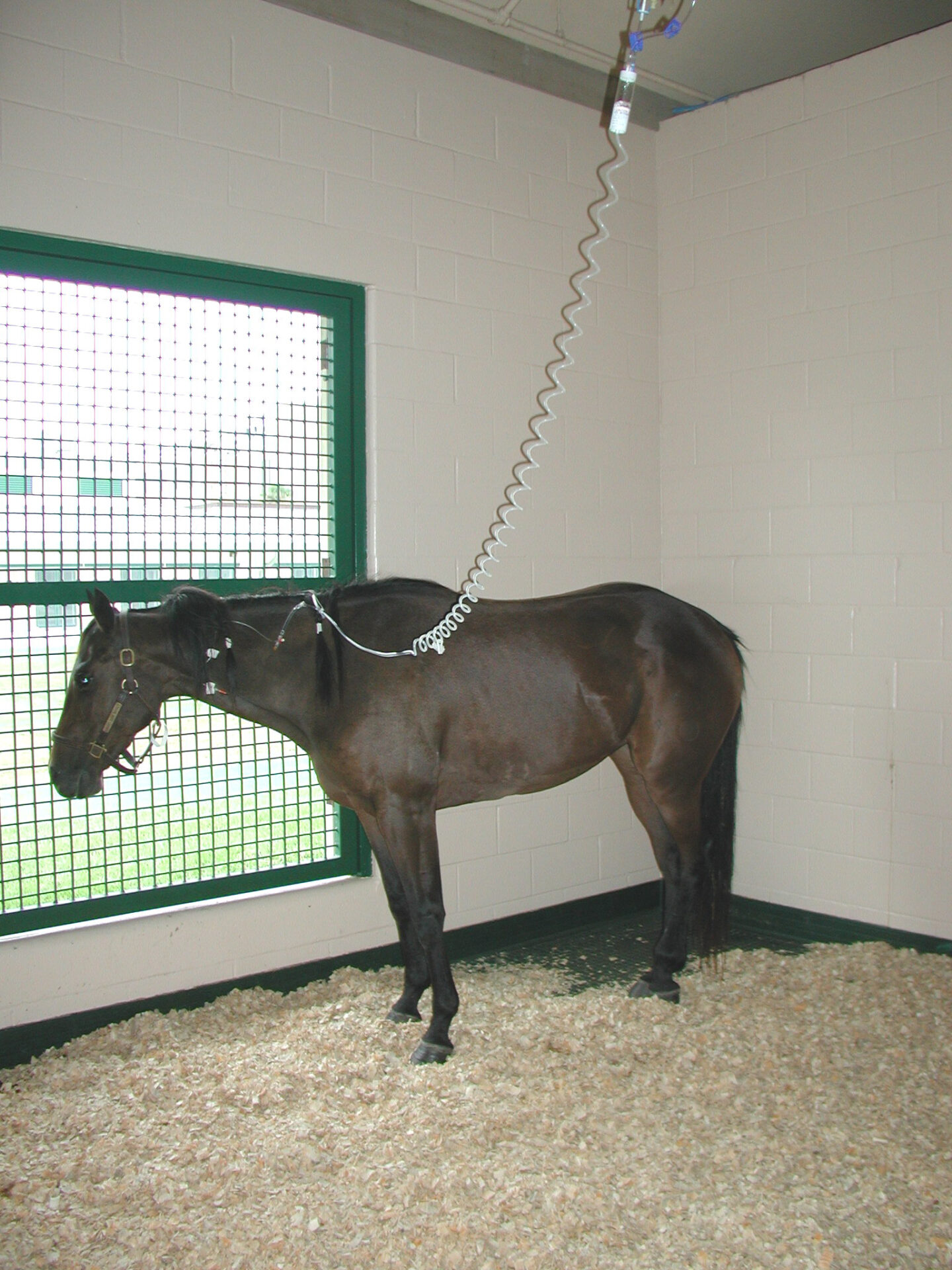
Equine Coronavirus (ECoV)
Infection of adult horses with Equine Coronavirus (ECoV) is now being reported worldwide with an increasing incidence. This is primarily due to recognition of the clinical syndrome and the availability of good diagnostic testing. Disease may occur in individual horses or less commonly in groups of animals. The virus has also been linked to diarrhoea…
-
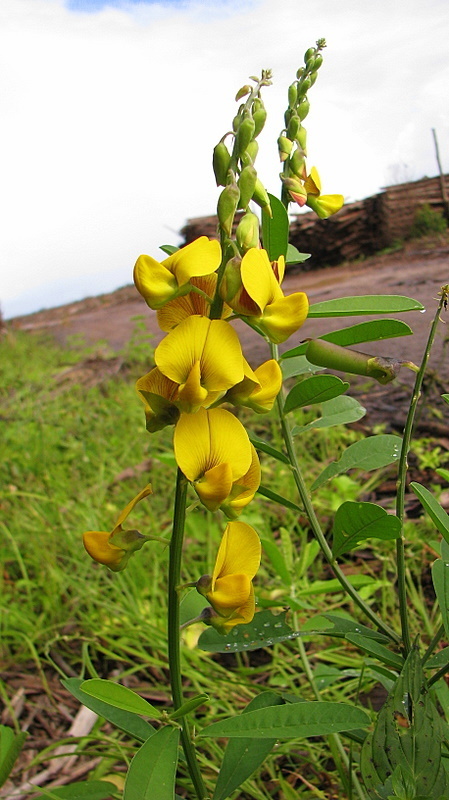
Pyrrolizidine Alkaloid Toxicosis
Ingestion of pyrrolizidine alkaloid containing plants is the most common cause of chronic liver injury worldwide. Australian species include cotton fireweed (Senecio quadrientatus), common heliotrope, ragwort (Senecio species), rattlepod (Crotalaria species), and Paterson’s curse (Echium plantagineum). Kimberley walkabout disease (see hepatoencehpalopathy), is due to chronic ingestion of Crotalaria species, such as Crotalaria retusa (wedge-leaf rattlepod),…
-
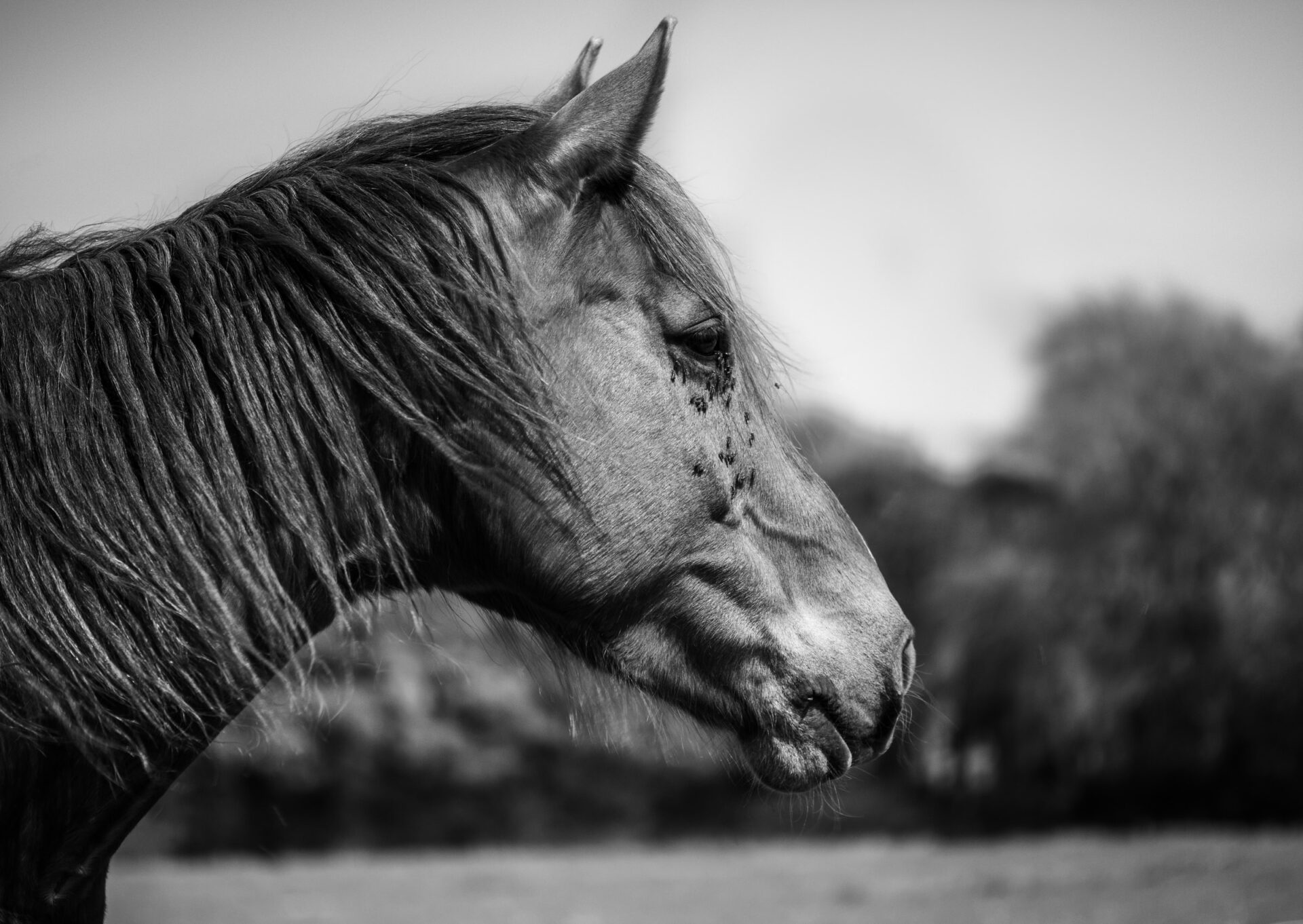
Equine Infectious Anaemia (EIA)
Equine Infectious Anaemia (EIA) occurs in most countries around the world, including Australia, where it occurs in small pockets along the river systems in central and western Queensland. The incidence of EIA in Queensland tends to increase after flooding. The disease is called “swamp fever” in some areas. EIA is caused by a lentivirus within…
-

Rabies and Australian Bat Lyssavirus (ABLV)
Australia is considered to be free of rabies in our mammalian populations. In countries with terrestrial rabies the dog is the principal reservoir of the virus. Other Canidae responsible for transmission of the rabies virus include foxes, coyotes and wolves. Bats, skunks, monkeys, raccoons and cats can also be infected. Rabies is a significant killer…
-
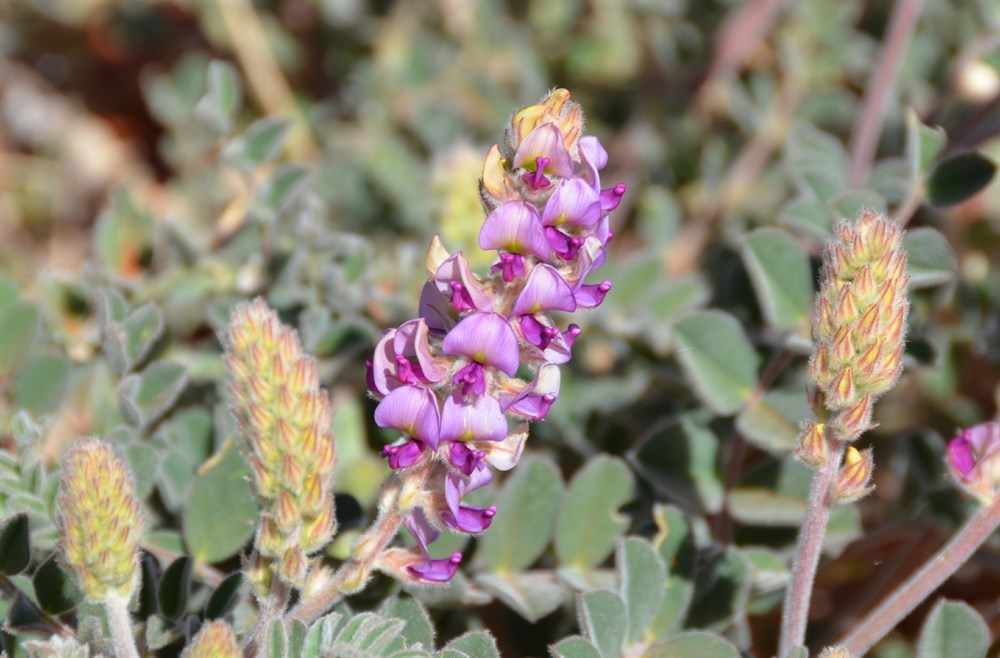
Swainsona poisoning
There are seven species of Swainsona in Australia that are capable of causing disease in horses and other livestock. Some of the species include the dwarf darling pea, grey swainsona, and the smooth darling pea. In central and western Australia the species most commonly found is the grey swainsona, Swainsona canescens. Sturt’s desert pea (Swainsoma…
-

Equine Herpesvirus Myeloencephalopathy (EHM)
In certain regions of the world outbreaks of EHM appear to be increasing in frequency over the past 25 years. EHM is caused by Equine herpesvirus 1, a virus responsible for upper respiratory infections, late-term abortion, death in newborn foals, as well as spinal cord disease. There is neuropathogenic variant of EHV-1, which leads to…


